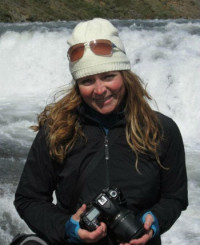Anne Murphy, executive director of Shasta Land Trust, is newly arrived to California. Up until now, she spent most of her time in the mid-west. She worked in stewardship, conservation planning and land protection at Western Reserve Land Conservancy in Ohio and Little Traverse Conservancy, in Michigan.
“I’m thrilled and excited” to be at Shasta Land Trust, says Murphy, calling this position a kind of natural progression in the conservation path she is taking.
“I really like Shasta Land Trust. It’s a small organization with a great community base and a strong community connection.”
Anne believes the accreditation process helps streamline the activities of the land trusts that go through it—“it’s a really good experience for the board and staff.”
“The process also provides good information for the long road ahead for these land trusts of ours in terms of our stewardship responsibilities.”
While it’s lot of work getting those policies and procedures in order, Anne believes it’s a really great way to understand why it is land trusts do what they do—“understanding perpetuity and planning for that.”
Her advice to land trusts who may be considering going through the accreditation process?
“Preparing in advance, it’s always important to reach out to other land trusts especially other organizations of a similar size—that have gone through the accreditation process. It can help to get an understanding of their first-hand experience.”
She also advises land trusts to start with the AYO.
“Assessing your organization is the very key first step—helping to understand where the organization stands in preparation.”
Accreditation Commissioners are volunteers. Anne spends about 200 hours per year, 5-8 hours per month performing extensive review of applicants and their policies.
Why give so much of her time?
“I’m really enamored with the work of land trusts.”
“I’m a big picture person—like to know how all the organizations both nationally and statewide are tied into each other.”
She believes accreditation is a great learning process, for both the land trusts going through it and the commissioners themselves. She’s also appreciative of the staff and other commissioners, calling them “some of the most amazing and thoughtful people I have ever worked with.”
“It’s a very, very thoughtful process—that keeps me motivated to continue being a part of it.”
By Dawn Van Dyke
Photo courtesy Anne Murphy

